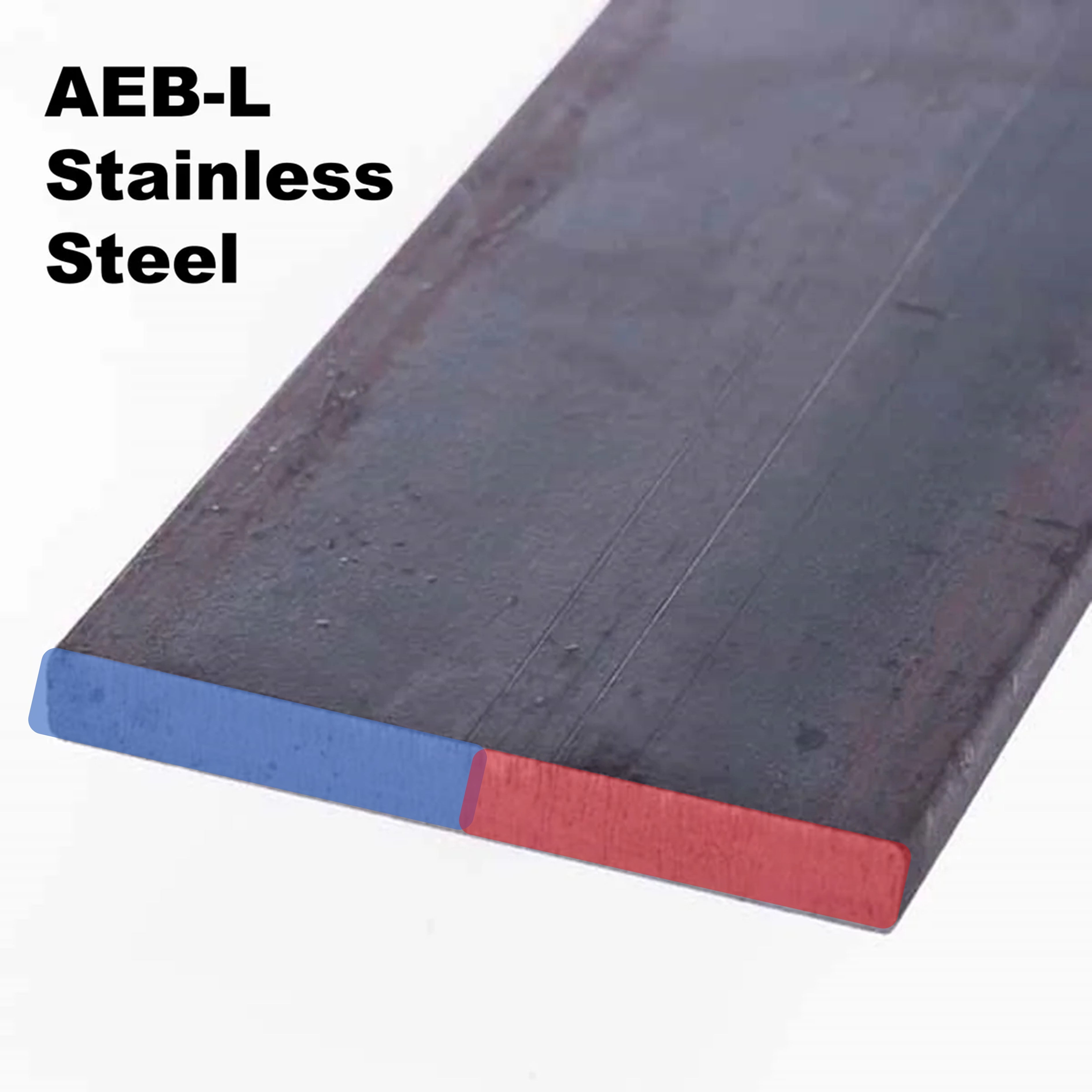AEB-L - Stainless Blade Steel Flat Bars
This steel is supplied cold rolled and annealed. It has a smooth surface free of decarburisation or pitting and is soft and easily cut, ground, drilled, and filed.
AEB-L is an extremely fine-grained stainless steel patented by Uddeholm in the late 1960s, developed for use in razorblades. The carbide size in AEB-L is typically below 1 micron, compared to 10 microns or more in 440C stainless steel.
The relatively low percentages of carbon and chromium in the alloy are carefully balanced to give the desired properties of adequate corrosion resistance, very high toughness, high hardness, and the ability to take and hold a very fine sharp edge.
Carbon – 0.68%
Silicon – 0.40%
Manganese – 0.60%
Chromium – 13.00%
Iron – Balance
Toughness 9/10 – Extremely high toughness, tougher than all other stainless steels and most carbon and tool steels; suitable for any size of blade from scalpels and razors to machetes and swords.
Edge retention 3/10 – Better edge retention than almost all carbon steels, lower edge retention than most stainless steels. Easily blunted by abrasive wear but extremely good edge stability resistant to chipping and rolling. Lower abrasive wear resistance also means AEB-L is easier to grind, hand sand, and polish compared to other stainless steels, especially alloys high in vanadium.
Corrosion resistance 7/10 – Adequate resistance to rust, on par with many other common stainless steels like CPM 154 and Nitro-V.
Recommended heat treatment
- Coat blade in an anti scale compound or seal in double crimped 321 or 309 grade stainless steel tool wrap
- Austenitise – heat to 1080°C and hold for 10 minutes (see note)
- Quench between aluminium plates, or air quench, or oil quench
- Immerse in liquid nitrogen or a dry ice slurry or place in a kitchen freezer for 1 hour or more – the lower the temperature the more austenite will be converted to martensite and the higher the as-quenched hardness will be
- Temper at 150-230°C for 2 hours, twice, depending on desired hardness
Note: If you are not using liquid nitrogen or dry ice as a cold treatment before tempering, lower austenitising temperatures will give better results – 1065°C with a freezer, 1050°C with no cold treatment
Approximate as-quenched hardness before tempering:
- 1080°C followed by liquid nitrogen 65HRC
- 1080°C followed by dry ice 64HRC
- 1065°C followed by freezer 63HRC
- 1050°C followed by cooling to room temperature 62HRC
Recommended working hardness 60-64HRC
















